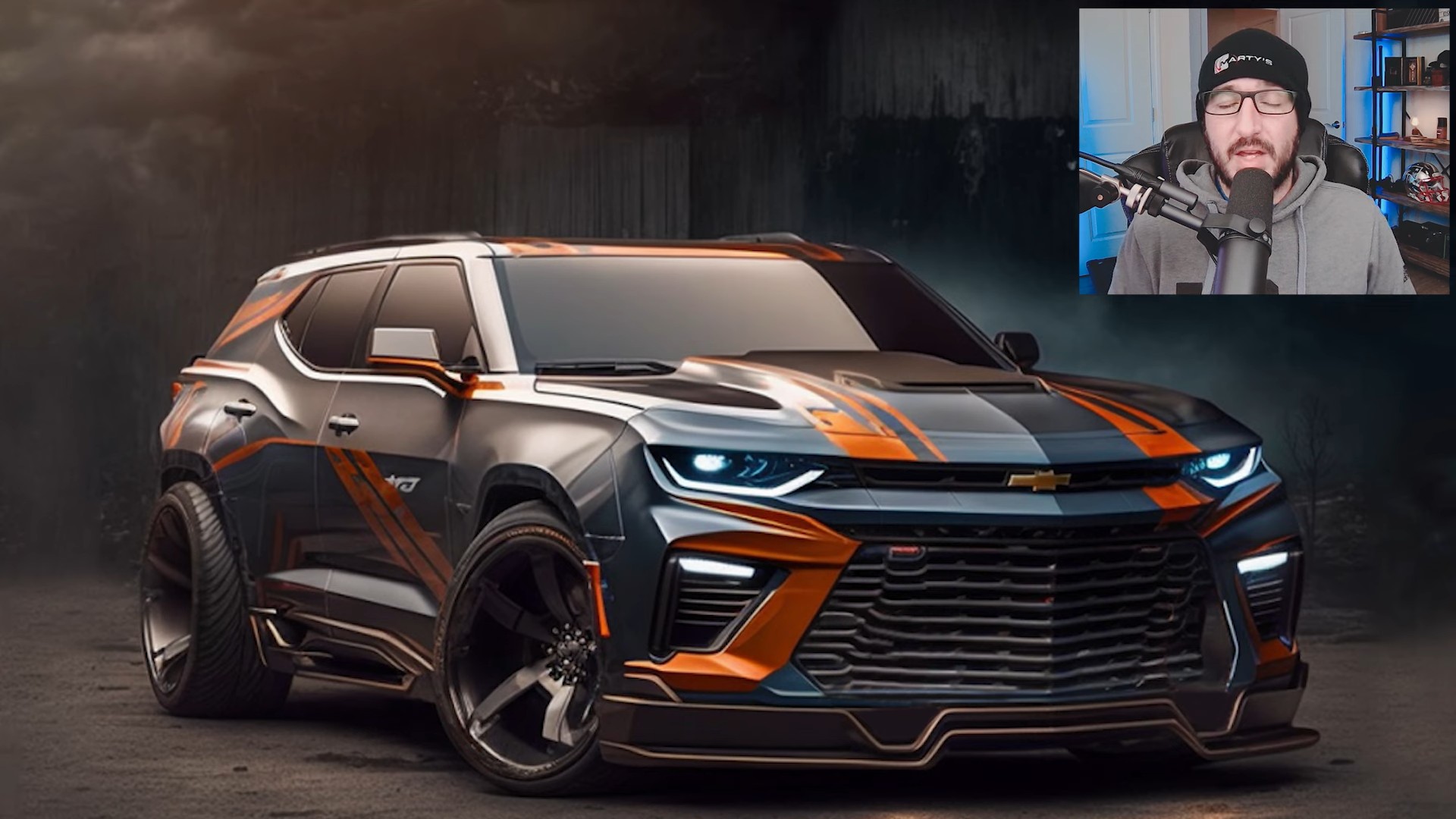Chevy 2500 And 3500 Trucks For Sale: Your Comprehensive Guide to Finding the Perfect Heavy-Duty Workhorse pickup.truckstrend.com
In the world of pickup trucks, few names command as much respect and recognition for sheer capability as the Chevrolet Silverado HD series. When you hear "Chevy 2500 and 3500 trucks for sale," you’re entering a realm of heavy-duty performance designed for serious work, significant towing, and uncompromising durability. These are not just vehicles; they are indispensable tools for contractors, farmers, adventurers, and anyone who demands more from their truck than the average half-ton can offer.
This comprehensive guide will navigate the landscape of buying a used Chevy 2500 or 3500, offering insights into their capabilities, what to look for, where to find them, and how to make an informed purchase that perfectly matches your needs and budget.
Chevy 2500 And 3500 Trucks For Sale: Your Comprehensive Guide to Finding the Perfect Heavy-Duty Workhorse
Understanding the Chevy Silverado HD Lineup: 2500 vs. 3500
The "HD" in Silverado HD stands for Heavy Duty, a designation that separates these trucks from their lighter 1500 counterparts. While both the 2500 and 3500 are formidable machines, they cater to slightly different levels of extreme capability.
-
Chevy Silverado 2500HD (Three-Quarter Ton): Often referred to as a "3/4-ton" truck, the 2500HD is the entry point into the heavy-duty segment. It offers significantly higher payload and towing capacities than a 1500, making it ideal for towing large travel trailers, fifth-wheel campers, or substantial utility trailers. It balances robust capability with a ride quality that, while firm, is generally more manageable for daily driving than a 3500. Most 2500HDs come with a single rear wheel (SRW) configuration.
-
Chevy Silverado 3500HD (One-Ton): The "1-ton" 3500HD takes capability to the maximum. It boasts the highest payload and towing capacities in the Silverado lineup, often available with a Dual Rear Wheel (DRW) configuration, colloquially known as "dually." This extra set of rear wheels significantly enhances stability and gross vehicle weight rating (GVWR), making it the preferred choice for towing massive fifth-wheel RVs, gooseneck trailers, or heavy commercial loads. While still capable of daily driving, its size and stiffer suspension are geared more towards heavy-duty tasks.

The core distinction lies in their Gross Vehicle Weight Rating (GVWR) and Gross Combined Weight Rating (GCWR), which directly translate to their maximum payload and towing capacities. Both models share many components, including engine options, but the 3500HD often features stronger suspension components, higher-rated tires, and the option for DRW to handle the increased loads.
Key Features and Capabilities You’ll Find
Chevy HD trucks are renowned for their robust engineering and feature-rich interiors, especially in recent generations.

-
Engine Options:
- Gasoline V8: Historically, Chevy HD trucks have offered powerful gasoline V8 engines, often around 6.0L or 6.6L. These engines provide excellent power for most towing and hauling needs, are generally cheaper to maintain than diesels, and have lower upfront costs. Modern gas engines, like the 6.6L V8, deliver impressive torque and horsepower, making them highly capable.
- Duramax Diesel V8: The legendary 6.6L Duramax Turbo-Diesel V8 is the crown jewel for heavy-duty performance. Paired with an Allison automatic transmission (or a similar heavy-duty unit in newer models), the Duramax offers immense torque, superior fuel economy (especially when towing), and incredible longevity. If you plan on consistently towing at the upper limits of the truck’s capacity, the Duramax is the engine of choice, though it comes with a higher price tag and potentially more complex maintenance.

-
Towing and Payload: These trucks are built to pull and carry. Depending on the year, engine, cab configuration, and drivetrain (2WD/4WD), a 2500HD can typically tow anywhere from 14,000 to 18,000+ lbs, with payload capacities often exceeding 3,500 lbs. A 3500HD, particularly a dually, can soar past 30,000 lbs in towing capacity and over 7,000 lbs in payload. Always check the specific truck’s door jamb sticker for its exact ratings.
-
Technology and Comfort: Modern Chevy HD trucks are far from bare-bones work vehicles. They offer advanced infotainment systems with Apple CarPlay/Android Auto, multiple USB ports, Wi-Fi hotspots, and sophisticated trailering technology. This includes features like trailer sway control, integrated trailer brake controllers, trailer cameras, and even advanced camera views for easier hitching and maneuvering. Higher trim levels (LTZ, High Country) boast luxurious interiors, leather seating, heated/ventilated seats, and premium audio systems, making long hauls comfortable.
-
Trim Levels: Chevy offers a range of trim levels, from the basic Work Truck (WT) which is all about utility, to the Custom, LT, and LTZ, offering increasing levels of comfort and features, up to the top-tier High Country, which rivals luxury SUVs in amenities. Recently, off-road focused trims like the ZR2 and ZR2 Bison have also emerged for those who need heavy-duty capability off the beaten path.
Why Buy a Used Chevy 2500 or 3500?
Opting for a used heavy-duty truck makes a lot of sense for many buyers.
- Significant Cost Savings: New HD trucks can be incredibly expensive. Buying used allows you to get a highly capable vehicle for a fraction of the original price, often with many years of life left.
- Depreciation Advantage: The steepest depreciation hit occurs in the first few years. By buying used, you let the first owner absorb this cost, meaning your truck will hold its value better over your ownership period.
- Proven Reliability: These trucks are built to last. Many owners report hundreds of thousands of miles on their Duramax and gasoline engines with proper maintenance. Buying a truck that has already proven its mettle can be reassuring.
- Immediate Availability: Unlike ordering a new truck, a used truck is typically available for immediate purchase and delivery, perfect if you need a heavy-duty vehicle quickly.
- Already Broken In: A used truck has often had its initial "break-in" period completed, and any minor manufacturing quirks may have already been addressed.
Where to Find Chevy 2500 and 3500 Trucks For Sale
The market for used HD trucks is robust. Here are the primary places to look:
- Dealerships (New and Used): Reputable dealerships often have a good selection of used HD trucks. They typically offer financing options, vehicle history reports (VHRs), and sometimes even certified pre-owned (CPO) programs with warranties.
- Online Marketplaces: Websites like AutoTrader, CarGurus, Edmunds, Kelley Blue Book (KBB), and Cars.com aggregate listings from dealerships and private sellers nationwide. These sites offer extensive filters to narrow down your search by year, mileage, price, features, and location.
- Private Sellers: Check classifieds on Craigslist, Facebook Marketplace, and local community groups. Private sales can often yield better prices as there’s no dealership markup, but they require more due diligence on your part.
- Auctions: Government surplus auctions, fleet auctions, and public auto auctions can sometimes offer great deals, but they are typically "as-is, where-is" sales, meaning you bear all the risk. This option is best for experienced buyers or those with mechanical expertise.
Important Considerations When Buying
Purchasing a heavy-duty truck, especially a used one, requires careful consideration.
- Condition and Inspection: This is paramount. Look for rust on the frame, body panels, and undercarriage. Check for signs of accident damage, mismatched paint, or poor repairs. Inspect the interior for excessive wear, tears, or broken components. A Pre-Purchase Inspection (PPI) by an independent mechanic specializing in heavy-duty trucks (especially diesels) is highly recommended. They can spot issues you might miss.
- Mileage vs. Hours: While mileage is a common metric, for HD trucks, especially diesels, engine hours can be equally or more important. High idle hours can put wear on an engine without accumulating significant mileage. Ask for service records that might indicate hours if available. For a diesel, 150,000-250,000 miles is often considered mid-life, but a well-maintained one can go much further.
- Maintenance History: Demand service records. Regular oil changes, transmission fluid changes, differential services, and fuel filter replacements (for diesels) are crucial for longevity. A truck with a patchy or non-existent service history is a red flag.
- Usage History: Was it a dedicated work truck that saw hard labor daily, or a personal vehicle used for occasional towing? Commercial trucks often have higher wear and tear despite meticulous maintenance. Look for signs of heavy towing, like a worn hitch receiver, damaged bed liner, or upgraded suspension components.
- Engine Type (Gas vs. Diesel):
- Gas: Lower upfront cost, simpler maintenance, cheaper parts, good for occasional heavy towing or frequent short trips.
- Diesel: Higher upfront cost, higher maintenance costs (fuel filters, DEF, injectors), but superior towing power, better fuel economy when towing, and incredible longevity. If you plan to tow extremely heavy loads frequently, the Duramax is hard to beat.
- Configuration:
- Cab Style: Regular Cab (2 doors, 2-3 seats), Extended Cab (2 small rear doors, jump seats), Crew Cab (4 full-size doors, spacious rear seats). Crew cabs are most popular for their versatility but add length and weight.
- Bed Length: Standard Bed (approx. 6.5 ft) or Long Bed (approx. 8 ft). Long beds are essential for many fifth-wheel hitches and maximizing cargo space.
- 2WD vs. 4WD: 4WD is crucial for off-road capability, snowy conditions, or launching boats on slippery ramps. 2WD trucks are generally cheaper, lighter, and get slightly better fuel economy.
- SRW vs. DRW: As discussed, SRW for most heavy tasks, DRW for maximum towing and stability with very heavy loads.
Tips for a Successful Purchase
- Set a Realistic Budget: Include not just the purchase price but also potential registration, insurance, and immediate maintenance costs.
- Research Specific Models and Years: Look up common issues for the specific year range you’re considering. Online forums and owner groups are excellent resources.
- Test Drive Thoroughly: Don’t just drive around the block. Drive on the highway, over bumps, and if possible, with a trailer (if you plan to tow). Listen for unusual noises, check the brakes, transmission shifts, and steering.
- Negotiate Wisely: Arm yourself with market research. Know what similar trucks are selling for. Don’t be afraid to walk away if the deal isn’t right.
- Understand Financing: If financing, get pre-approved by your bank or credit union before visiting a dealership.
- Be Patient: The right truck might not appear overnight. Take your time to find a vehicle that truly meets your needs and is in good condition.
Potential Challenges and Solutions
- High Prices for Low-Mileage Diesels:
- Solution: Consider gasoline variants, older models, or trucks with higher mileage that have a documented service history. A well-maintained higher-mileage diesel can still have plenty of life.
- Finding Specific Configurations (e.g., Long Bed, DRW):
- Solution: Broaden your search radius, use advanced filters on online marketplaces, and set up alerts for new listings.
- Hidden Mechanical Issues:
- Solution: This is why a PPI and a comprehensive VHR (CarFax/AutoCheck) are non-negotiable. Invest in these tools to save thousands later.
- High Maintenance Costs (Especially Diesel):
- Solution: Factor these into your budget. Diesel fuel filters, DEF (Diesel Exhaust Fluid) if applicable, and specialized repairs can be costly. Learn basic DIY maintenance if comfortable, or budget for professional service.
Estimated Price Ranges for Used Chevy 2500 and 3500 Trucks
Please note: These prices are highly variable based on location, exact trim level, options, condition, and specific mileage. This table serves as a general guideline. Always conduct your own research for current market values.
| Model Year Range | Condition/Mileage | Estimated Price Range (2500 Gas) | Estimated Price Range (2500 Diesel) | Estimated Price Range (3500 Gas) | Estimated Price Range (3500 Diesel) |
|---|---|---|---|---|---|
| 2020-Present | Excellent, Low Miles (0-50k) | $45,000 – $65,000+ | $55,000 – $80,000+ | $48,000 – $70,000+ | $60,000 – $90,000+ |
| 2015-2019 | Good, Moderate Miles (50k-120k) | $28,000 – $45,000 | $35,000 – $55,000 | $30,000 – $48,000 | $40,000 – $65,000 |
| 2010-2014 | Fair, Higher Miles (120k-200k) | $18,000 – $28,000 | $25,000 – $38,000 | $20,000 – $30,000 | $28,000 – $45,000 |
| Pre-2010 | Work Truck, High Miles (200k+) | $10,000 – $18,000 | $15,000 – $25,000 | $12,000 – $20,000 | $18,000 – $30,000 |
Disclaimer: Prices are estimates only and do not include taxes, fees, or potential reconditioning costs. Specific trims (e.g., High Country, ZR2) and unique features will command higher prices.
Frequently Asked Questions (FAQ)
Q1: What’s the main difference between a Chevy 2500 and 3500?
A1: The primary difference lies in their maximum payload and towing capacities, with the 3500 having higher ratings due to stronger suspension components and the option for dual rear wheels (dually) for ultimate stability and load handling.
Q2: Is a diesel (Duramax) worth the extra cost for a used HD truck?
A2: If you plan on consistently towing heavy loads (e.g., large fifth-wheel RVs, commercial trailers) or require maximum longevity, the Duramax diesel is often worth the extra upfront and maintenance cost due to its superior torque, fuel efficiency when loaded, and durability. For lighter, occasional towing or daily driving without heavy loads, a gasoline engine might be more economical.
Q3: What mileage is too high for a used Chevy HD truck?
A3: For a well-maintained gasoline HD truck, 150,000-200,000 miles can still offer plenty of life. For a Duramax diesel, 200,000-300,000 miles is not uncommon, and many go much further. The key is proper maintenance history and a thorough pre-purchase inspection, rather than just the odometer reading.
Q4: How important is a pre-purchase inspection (PPI)?
A4: Extremely important. A PPI by an independent, trusted mechanic can uncover hidden mechanical issues, rust, or damage that could save you thousands of dollars in repairs down the line. It’s a small investment that provides significant peace of mind.
Q5: Can I really save money buying used compared to new?
A5: Absolutely. New heavy-duty trucks experience significant depreciation in their first few years. Buying a 3-5 year old model can often save you 30-50% off the original MSRP while still getting a highly capable and modern truck.
Q6: What should I look for when test driving a used HD truck?
A6: Listen for unusual engine noises, check for smooth transmission shifts, test all lights and electronics, feel for vibrations or pulling in the steering, and check the brakes. If possible, drive at various speeds, including highway, and over different road surfaces to assess ride quality and suspension.
Q7: Are parts and maintenance expensive for these trucks?
A7: Generally, parts and labor for heavy-duty trucks, especially diesels, can be more expensive than for half-ton trucks or passenger vehicles due to their robust components and specialized systems. Factor this into your ownership budget.
Conclusion
The search for Chevy 2500 and 3500 trucks for sale opens the door to unparalleled capability and reliability. Whether you’re looking to conquer challenging job sites, embark on grand towing adventures, or simply own a truck that can handle anything you throw at it, the Silverado HD series delivers. By understanding the differences between the 2500 and 3500, knowing what features matter most, and approaching your purchase with diligent research and a critical eye, you can secure a heavy-duty workhorse that will serve you faithfully for years to come. Invest your time wisely in the selection process, and you’ll find the perfect Chevy HD truck to power your next big task or adventure.
